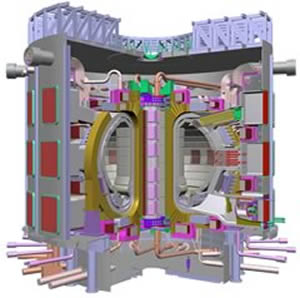Fusion reactor coming together in France
 The world’s latest bid has been launched in the effort to harness a form of energy which seems as revolutionary as it is elusive.
The world’s latest bid has been launched in the effort to harness a form of energy which seems as revolutionary as it is elusive.
Nuclear fusion has long been the dream of scientists and energy companies; the technique aims to recreate the energy-factory conditions of the boiling sun in a way that can be controlled for power generation.
At a site in France over the weekend the ‘ITER’ project at Cadarache has entered a critical phase on the path to achieving stable fusion. The project is still in its construction phase, and currently about two years behind, but it has finally starting receiving shipments of the components for its highly-experimental new reactor. It will eventually be comprised of over a million parts.
The ITER reactor will test the hope that near unlimited amounts of energy can be drawn from commonplace materials. Known as a "tokamak," the project is based on the design of jet engine, a European pilot project at Culham in Oxfordshire has involved creating a plasma of superheated gas, which reaches the temperatures of more than 200 million degrees. The process takes place inside a giant magnetic field in the shape of a ring.
Test plants so far have been able to achieve fusion reactions in very short bursts, requiring significantly more power than it was able to produce.
The reactor at ITER is on a much larger scale and has been designed to generate 10 times more power than it will consume.
More information is available from the official ITER website.







 Print
Print